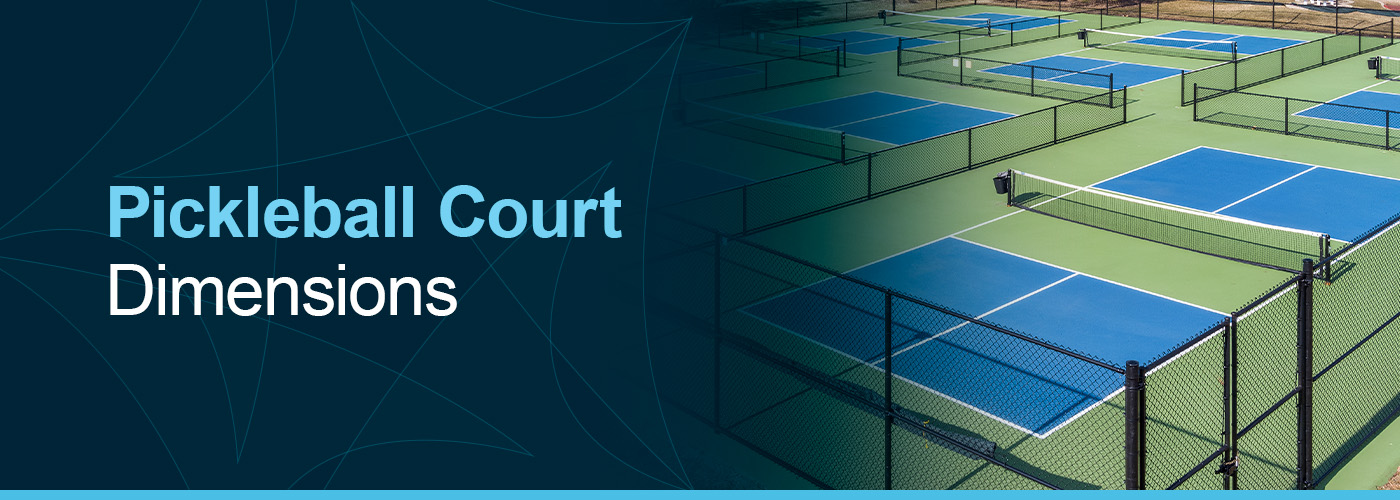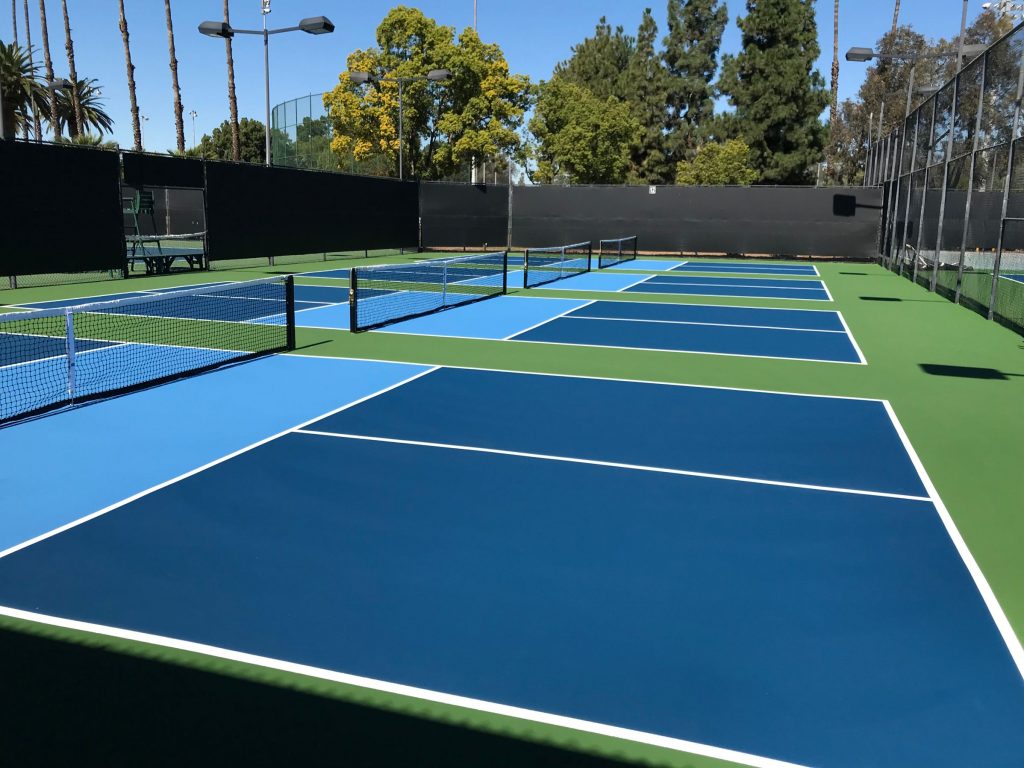Common Mistakes to Avoid in Your Pickleball Court Construction Process
Common Mistakes to Avoid in Your Pickleball Court Construction Process
Blog Article
Boost Resident Engagement With Community-Driven Pickleball Court Projects
The introduction of community-driven pickleball court tasks presents a distinct opportunity to foster neighborhood involvement and reinforce community ties. The real question stays: just how can these grassroots efforts be strategically applied to make sure sustainability and inclusivity in varied areas?
Importance of Community Interaction
Area engagement is a vital element in the successful development of pickleball court projects, as it cultivates a sense of ownership and collective duty amongst homeowners. When neighborhood participants are proactively involved in the planning and execution stages, they are more probable to promote for the task's long-lasting success. Engaging stakeholders such as local gamers, families, and leisure groups makes sure that the facilities fulfill the varied needs and choices of the community.
In addition, community engagement cultivates an encouraging setting where locals really feel encouraged to add their concepts and resources. Pickleball court construction. This joint strategy can cause ingenious services that boost the layout and capability of the courts, making them much more enticing to a bigger target market. In addition, involving residents in decision-making procedures can strengthen social connections, advertising inclusivity and unity within the community
The exposure of community assistance for a pickleball task can also play a pivotal duty in protecting financing and authorization from neighborhood authorities. By showing a shared dedication to entertainment growth, communities can successfully promote for resources and policy adjustments that prefer the establishment of pickleball courts, inevitably improving the regional society and recreational landscape.
Actions to Launch a Project
Starting a pickleball court task requires a methodical technique that improves the structure of community interaction developed in previous discussions. The first step is to set up a project committee consisting of regional stakeholders, enthusiasts, and reps from relevant companies. This diverse team makes sure that numerous viewpoints are thought about.
Following, carry out a demands assessment within the area. Surveys, emphasis teams, and public conferences can be effective in determining passion and event input on possible court areas, desired services, and scheduling choices. Following this, establish a job strategy describing timelines, purposes, and responsibilities.
When the plan remains in location, involve with neighborhood authorities to recognize zoning laws and any needed authorizations. Interacting transparently with the neighborhood throughout this process is important, as it promotes trust fund and urges further participation.
In addition, organizing neighborhood events can aid preserve energy and interest. These occasions can act as platforms for further discussion and aid to reinforce community ties. Paper every action taken and keep thorough records, as this will be valuable for future stages of the task, including funding and source acquisition.
Funding and Resources Available
Securing funding and resources for a pickleball court project is often an important step that can figure out the project's expediency and success. Numerous opportunities exist for acquiring financial backing, ranging from public financing to private sponsorships. Neighborhood government gives, often intended at advertising community health and wellness and recreation, can provide significant economic support image source for such initiatives.
In enhancement to government resources, nonprofit companies and foundations frequently offer gives especially for sports and community growth tasks. Engaging regional companies as sponsors can also be a rewarding approach; several firms are eager to purchase neighborhood initiatives that improve their business social responsibility account.
Crowdfunding platforms have become a practical option for grassroots fundraising, enabling neighborhood participants to add straight to the project. This approach not just increases funds however also cultivates a sense of possession amongst participants.
Style and Preparation Factors To Consider
Reliable design and preparation are fundamental elements of any kind of successful pickleball court project complying with the procurement of funding and resources. A detailed assessment of the suggested place is vital; this consists of analyzing availability, distance to existing area facilities, and the capacity for visibility and engagement.
The layout of the court must comply with main size specifications while thinking about the bordering atmosphere. Integrating attributes such as seating, color frameworks, and proper illumination can substantially boost gamer experience and viewer pleasure. Materials chosen for the court surface need to prioritize durability and safety, with alternatives like acrylic or asphalt offering click this ideal efficiency.
Including community participants in the layout process fosters a feeling of possession and guarantees that the facility fulfills regional requirements - Pickleball court construction. This can be accomplished with public assessments and surveys, enabling stakeholders to express their choices and problems
Sustainability needs to additionally be a concern; incorporating eco-friendly materials and methods can add to lasting feasibility. Lastly, developing a maintenance plan to guarantee the court remains in excellent problem will support ongoing neighborhood interaction and engagement in pickleball activities.

Success Stories and Study
Highlighting the transformative influence of community-driven campaigns, a number of success stories illustrate exactly how collaborative initiatives have actually resulted in the growth of vibrant pickleball courts throughout different regions. One notable example is the effort in a village in Florida, where citizens affiliated to convert an underutilized tennis court into a devoted pickleball center. With fundraising occasions and collaborations with local businesses, the community raised adequate funds to mount new webs, resurfacing, and lines, eventually cultivating a vibrant center for regional gamers.
In a similar way, in a suv area of The golden state, a grassroots motion arised to create pickleball courts in a local park. The project useful reference not just engaged volunteers for building but additionally included workshops to involve area participants in the sporting activity. Therefore, the courts came to be a focal factor for social interaction and health and fitness, bring in players of any ages.
These study exemplify just how community-driven tasks can boost local engagement, promote exercise, and enhance social bonds. By leveraging cumulative resources and enthusiasm, communities can effectively produce and sustain pickleball centers that serve diverse populaces and cultivate a sense of belonging.

Final Thought
In verdict, community-driven pickleball court projects act as crucial tools for improving neighborhood interaction and fostering a feeling of belonging among homeowners. By prioritizing stakeholder involvement throughout the planning and application phases, these initiatives can properly attend to diverse community demands. Additionally, leveraging offered resources and analyzing successful study can supply valuable insights for future tasks. Inevitably, such initiatives add to the transformation of public areas right into vibrant centers of fitness and social communication, reinforcing area ties.
The development of community-driven pickleball court projects presents a distinct chance to foster neighborhood interaction and reinforce community ties.Community engagement is an essential element in the effective development of pickleball court jobs, as it promotes a sense of possession and cumulative duty amongst homeowners. When area participants are actively involved in the preparation and implementation stages, they are extra most likely to advocate for the task's long-lasting success.Initiating a pickleball court job requires an organized approach that constructs on the foundation of community involvement developed in previous discussions. The project not only involved volunteers for construction but additionally consisted of workshops to engage neighborhood members in the sporting activity.
Report this page